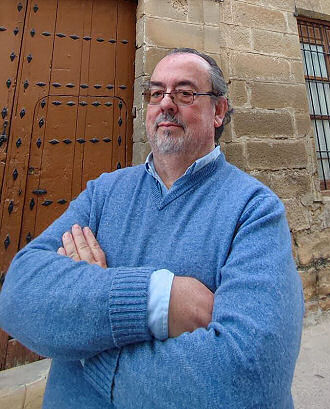|
Dear friends,
the Seville I love is the city with the most glorious past of ancient Hispania. At the height of its splendour, Seville equalled the most important capitals of the world and is now the most aristocratic of all the cities of Spain, and one of the most open to diversity.
Taking a walk through the streets of Seville is a mental process of great extrospection, searching for the routes most appropriate to the emotions we feel at that precise moment in time.
I would start with a long walk in Maria Luisa Park. There is a lovely café in the Plaza de las Palomas, the square of doves, which used to be only white and were fed on peas sold by ladies in aprons or retired gardeners. I would take a tour of this plaza around which there are several museums. The Archaeological Museum, with its statue of Trajan, son of Italica, naked and victorious, that of Hadrian, his adopted son, and the Carambol Treasure in solid gold, is the most extraordinary of these museums, but, unfortunately, it is currently closed.
Behind it, the work of Forestier, creator of this wonderful, enchanted forest. It's a thrill to see the Glorieta, the monument dedicated to Bécquer, the most representative writer of Spanish Romanticism, and later take a stroll through the majestic Plaza de España, the setting of the recent Dior fashion show. Sitting with students drinking a glass of Manzanilla and remembering Carmen in front of the Tobacco Factory, which is now the University, the Aljarafe olives and jamón puro Ibérico de Bellota are not to be missed
The walk can continue to the Pasarela, admiring San Telmo Palace and the Casino, enjoying the Murillo Gardens and those of Catalina de Ribera, the monument to Christopher Columbus, entering from the Plaza de Alfaro to the Plaza de Santa Cruz and the Callejón del Agua, which comes out on the Calle della Vida. Further ahead lies Plaza de Doña Elvira. But let's turn back and go through the Callejón de la Juderia, where the Jews lived, ending up in the Patio de Banderas, the Courtyard of Flags. To the left is the exit of the Alcazar and in front, the most beautiful image of the city, the Giralda, the Archivo de Indias and the Cathedral. We have come to our Plaza San Marcos, where you have to see absolutely everything. The Alcázar is the oldest Royal Palace still in use, with vestiges of all ages. The Archivo de Indias contains all the documentation on the history of the discovery of America. The Cathedral is the largest and richest after St. Peter's, and contains traces of different eras and cultures: from the Romans, to the Goths, from the Arabs to the Christians.
You can then stop for tapas in the Giralda bar, an ancient Arab hammam, lounging around gazing at all this beauty.
On another day, if you have an energy left, you can start with a visit to the Casa de Pilatos, then visit the cloistered nuns at the Convent of San Leandro and ask for some yemas, the famous egg yolk cakes that are passed through a revolving door. From there, you can stroll slowly to the Plaza del Salvador, where the church, formerly a mosque, still retains its courtyard for ablutions. Next door is the famous Cereria del Salvador where incense is sold.
Continuing a little further, you come to Plaza Nueva, where the City Hall is located. To see the sunset, we stroll along the river, passing the Plaza de Toros, the Maestranza and saying a prayer at the Hospital de la Caridad church which preserves Valdés Leal's “Finis Gloriae Mundi” and Murillo's paintings which survived pillaging by the Napoleonic troops.
Across the river, in the Triana district, you can buy ceramics and visit the Santa Ana Parish with its altarpiece by Pedro de Campaña. In Calle Betis at sunset you can eat tapas while admiring the view.
You can spend another day visiting the Museum of Fine Arts, which is among the most important art galleries in Spain and is home to the finest of Seville's paintings. Walking to the Basilica de la Macarena, you pass the Gran Poder church, San Vicente and many other small churches and convents, such as Santa Paula with its famous nativity scene. Also not to be missed are the Palacio de las Dueñas of the Dukes of Alba and that of the Countess of Lebrija and the Casa Salinas, as well as the churches of Santa Clara and Santa Catalina and the Capillita de San José.
Places to visit in the vicinity of Seville are Italica, the birthplace of Trajan and Hadrian with its Roman remains, and the Monastery of St. Isidore del Campo, where the saint, doctor of the church, lived.
Heading towards Huelva, Palos and Moguer, El Loreto is very beautiful. Heading toward Madrid, on the other hand, there is beautiful Carmona, with its churches and palaces and the ruins of past civilisations, and then Utrera with its churches, one of which is home to a beautiful Bernardino Luini, purchased by an ancestor of mine, who was governor of Maastricht, for the family chapel.
I think Seville warrants staying there six months, a year or a lifetime. This is what I wish for you. Welcome!
Manuel de Morales y Fernández de Xódar
|
|
|


